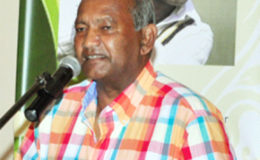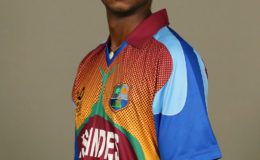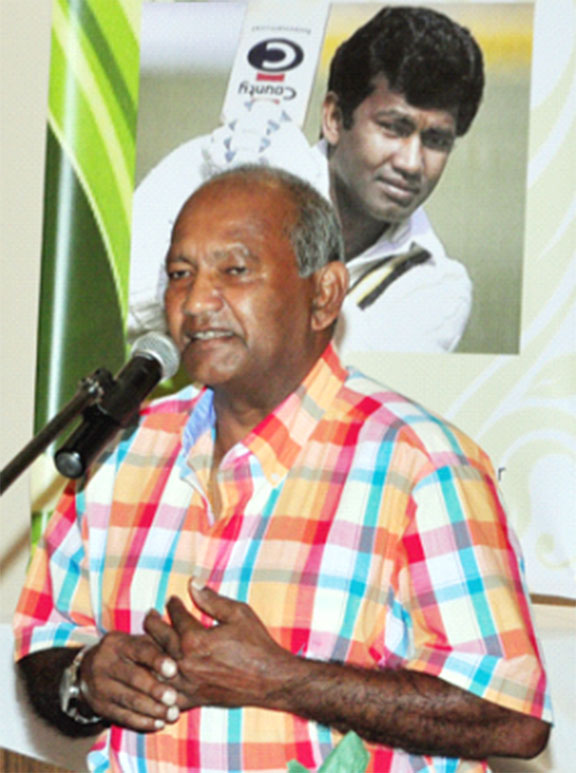Few things seem capable of evoking such strong emotions in Guyanese as the West Indies cricket team. And for the non-cricket fan, this phenomenon may seem mind boggling, especially with the poor performances of the men’s team over the last two decades.
Why cricket is special to Guyanese is an interesting question. Of course, some may even want to argue that Guyana is not even part of the West Indies and therefore its citizens shouldn’t even be part of its cricket team. But this argument has more or less been settled based on the history and culture of Guyana rather than its geography.
Nevertheless, the story of West Indies cricket is engaging and even a cursory examination of its narrative is bound to intrigue since it is both complex and fascinating. A particularly interesting part of this narrative is the contribution of Guyanese cricketers to the success and survival of the West Indies team. The significance of this part of the story of West Indies cricket should not be downplayed because strong West Indies’ teams have often been built on the services of skilled Guyanese cricketers. Such an assertion is in no way an attempt to undermine the contributions made by the other territories that make up the West Indies, but players like Rohan Kanhai, Clive Lloyd, Lance Gibbs, Basil Butcher, Alvin Kallicharran, Roy Fredericks, Colin Croft, Carl Hooper, Ramnaresh Sarwan, Shivnarine Chanderpaul and others have left their indelible mark on West Indies cricket.
West Indies have been plying their trade in Test cricket since 1928 and have experienced two periods of dominance in the long form of the game: the first from 1965 to 1968 and the second from 1980 to 1995. Not surprisingly, Guyanese cricketers have had key roles to play during these periods of dominance.
This article focuses on five Guyanese players who would have debuted after 1966—Lloyd, Croft, Kallicharran, Hooper and Chanderpaul—and looks at their contributions to West Indies cricket. With the exception of Croft, all were former WI captains, albeit with varying degrees of success.
Clive Lloyd

During his tenure as a West Indies cricketer, Clive Lloyd set a high standard as a captain, batsman and fielder.
In a Test career that spanned almost twenty years (1966 – 1985), Lloyd scored 7,515 Test runs from his 110 matches at an average of 46.67 with 19 centuries. His ODI record is equally impressive. In his 87 matches, he scored 1,977 runs at an average of 39.54. His highest score in this format came in the 1975 World Cup final where he scored a wonderful 102.
He also stood out in the field as an athletic fielder with a safe pair of hands. During his Test career, he took 90 catches.
It would be impossible to discuss Lloyd without referring to his success as a captain. Lloyd captained the West Indies in 74 Test matches—winning 36 matches and losing 12 with 26 draws. In ODI cricket he led the side in 84 matches, won 64 matches and lost 18 with one draw and one no result. This record makes him the most successful West Indies captain to date.
Significantly, he was at the helm of the side when the West Indies became the most dominant team in Test cricket and when they won the first two World Cups in limited over cricket. It was his policy to develop a team around a four-pronged pace attack that is seen as one of the key reasons behind the dominance of the WI team during this period.
Colin Croft

As a member of Lloyd’s four-pronged pace attack, Colin Croft has the distinction of being the most successful Guyanese fast bowler to play Test cricket for the West Indies. After debuting in February 1977, Croft played 27 matches and captured 125 wickets at an impressive average of 23.30. In his second Test match played against Pakistan in Port-of-Spain, he captured 8 for 29- the best figures by a West Indian fast bowler. Even in ODIs, he was a strong wicket taker as he took 30 wickets at an average of 20.66 in the 19 ODIs he played.
Croft was an extremely quick, unorthodox and fearsome bowler. Writing on the popular cricket website espncricinfo.com, Mike Selvey said: “‘Crofty,’ a West Indian team-mate once said, ‘would bounce his grandmother if he thought there was a wicket in it.’ In a relatively brief career lasting just five years, he established a reputation as one of the most chilling of fast men, with no compunction whatsoever about inflicting pain.”
Whether it was the fear factor, his skill or both, Croft had a knack of taking wickets regularly. His strike rate of 47.36 is among the best for a West Indies bowler.
Alvin Kallicharran

It was not just the runs he scored, but how he scored them that made Alvin Kallicharran one of the more exciting Guyanese batsmen to play for the West Indies. After making his debut in April 1972, Kallicharran played 66 Tests and scored 4,399 at an average of 44.43. He scored 12 centuries with his highest score, 187 against India.
He announced his entrance to Test cricket with a wonderful unbeaten century on debut against New Zealand and followed up with another century in his next match. Kallicharran was beautiful to watch. He had a full range of strokes to match his poise and balance at the crease. He was captain of the West Indies team between 1977 and 1978, replacing Lloyd following the emergence of Packer cricket in Australia.
Lloyd would later return to the captaincy, leading the West Indies to several more years of dominance. In all, Kallicharran captained the team in 9 Test matches.
Carl Hooper

For many years in the late 1980s and early 1990s, the much-maligned Carl Llewelyn Hooper was the only Guyanese who featured regularly in the West Indies team. While his record may aptly be described as average, it still suggests that he is one of the best all-round cricketers ever produced by the West Indies. In 102 Tests, he scored 5,762 runs at an average of 36.46; his highest score was 233 against India at Bourda in 2002. He also took 114 wickets with his off-spin.
Hooper, throughout his career, was also a valuable member of the West Indies team in 50-over cricket, scoring over 5,761 runs at an average of 35.34 and capturing 193 wickets.
After his sudden retirement from the game in 1999, Carl Hooper returned in 2001 to captain the West Indies. While he only led the team to victory in 4 of the 22 matches played while he was at the helm, the extra responsibility seemed to bolster his performance on the field, since during this period he averaged closer to 50 runs per innings.
He was also a remarkable fielder, being one of the few West Indians to take more than 100 catches in both Test cricket and One-day cricket.
Shivnarine Chanderpaul

In the midst of the waning fortunes of West Indies cricket, Shivnarine Chanderpaul has stood tall. He has the distinction of being the Guyanese with the most Test runs and is second on the all-time list of West Indies run scorers, behind Brian Lara.
In a Test career which spanned 21 years, Chanderpaul played 164 matches, scored 11,867 runs at an outstanding average of 51.37. He also scored 30 centuries, the most by a Guyanese batsman in Test cricket. His record in limited overs cricket is also outstanding. In 268 ODIs, he scored 8,778 runs an average of 41.60 with 11 centuries. He also has the highest ODI score for a Guyanese cricketer – 150 against South Africa.
Chanderpaul’s record is even more remarkable when it is examined in the context of a weak West Indies team, where his discipline, tenacity and skill stood out.
He led the West Indies in 14 Tests during the period 2005 to 2006, but struggled winning only one match while losing 10. His record at the helm in ODI was also poor since he only led the team twice to victory in his 16 games as skipper.
Of course, any discussion of players and their contributions will stir debates. Was Kanhai the best Guyanese batsman ever? Or does Chanderpaul, by the sheer weight of statistics, deserve that title? These arguments, while entertaining, are generally futile since the comparison is between two different kinds of cricketers who played under completely different circumstances. What should be celebrated, however, is the important contribution each player has made to the game in the region.

